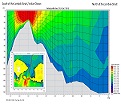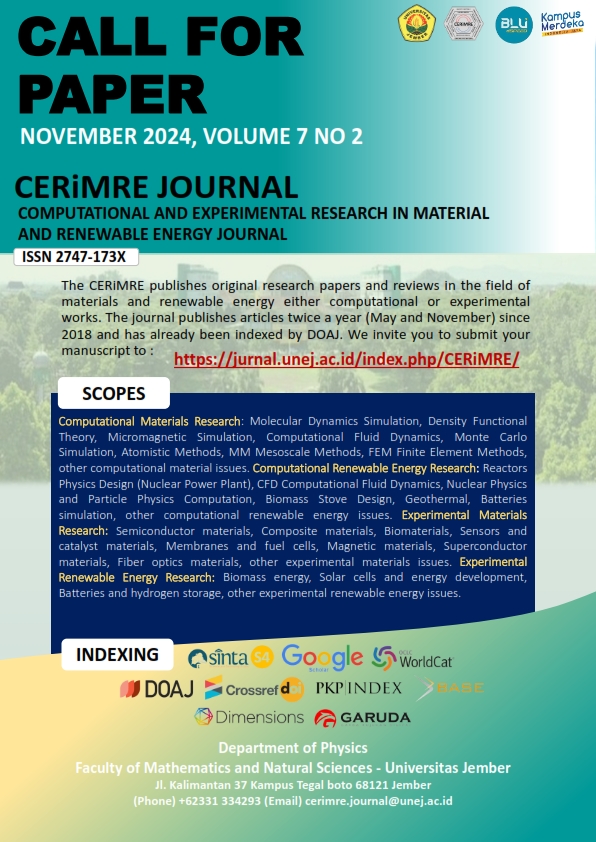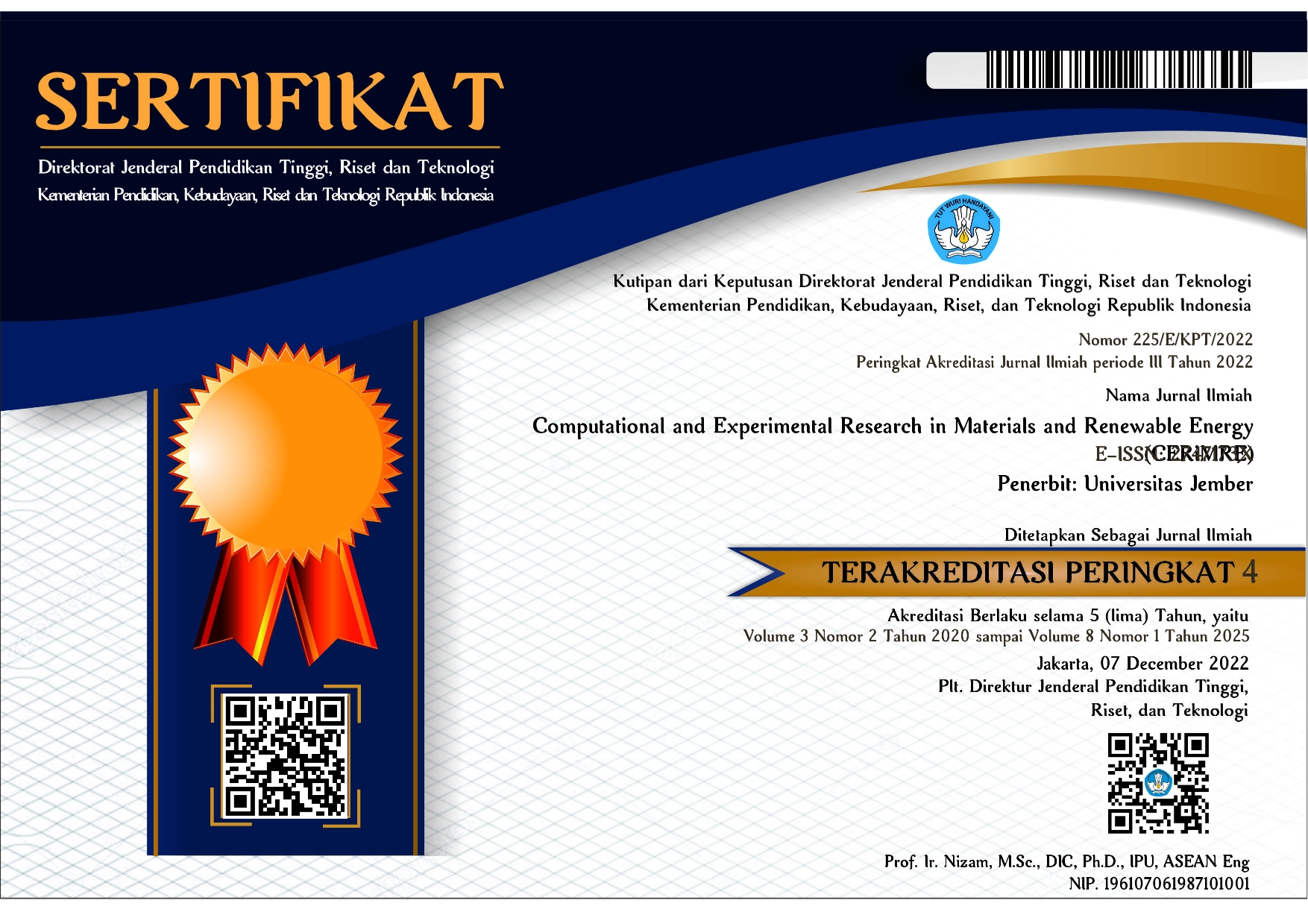Hydrodynamic Characteristics of the Lombok Strait During the 2022 West Monsoon Peak and Estimation of Ocean Current Power Generation Potential
Abstract
The Lombok Strait is one of the crucial straits in the Indonesian area because it falls in the Indonesian Archipelagic Sea Lanes of Communication II (ALKI II), and is considered as a strategic chokepoint. Additionally, it serves as a passage for ARLINDO, facilitating the movement of water masses from the Pacific to the Indian Ocean. This unique attribute creates a diverse ecosystem in the Lombok Strait due to the convergence of marine organisms from both oceans. The Lombok Strait presents an opportunity for harnessing renewable energy from its currents. However, there is a scarcity of direct measurements and oceanographic data for the Lombok Strait, making it impractical and costly to conduct direct observations using oceanographic mooring instruments. Therefore, one approach to better understand natural phenomena in the ocean is to use numerical methods such as Computational Fluid Dynamics (CFD) with the Finite Element Method (FEM) application. In this study, the software Mike3FM was used, which incorporates both Computational Fluid Dynamics (CFD) and the Finite Element Method (FEM). This software used bathymetric data and coastlines to create a triangular mesh in the horizontal plane and a grid mesh in the vertical plane. The simulations conducted in January 2022, for 30 days with hourly intervals around the sill area showed an average current velocity of 1.2 m/s at various depths, including 5, 50, 150, and 250 meters. The current primarily flowed southward in the direction of the Indian Ocean. The conversion of avarage current velocity to electrical power at depths of 5, 50, 150, and 250 meters above the sill yielded values of 0.86 kW, 0.70 kW, 0.34 kW, and 0.19 kW, respectively. Based on the results of the hydrodynamic modeling experiments, it is evident that the Lombok Strait has the potential to develop ocean current power generation.
Keywords: Hydrodynamics, the Lombok Strait, CFD, FEM, West Monsoon.











